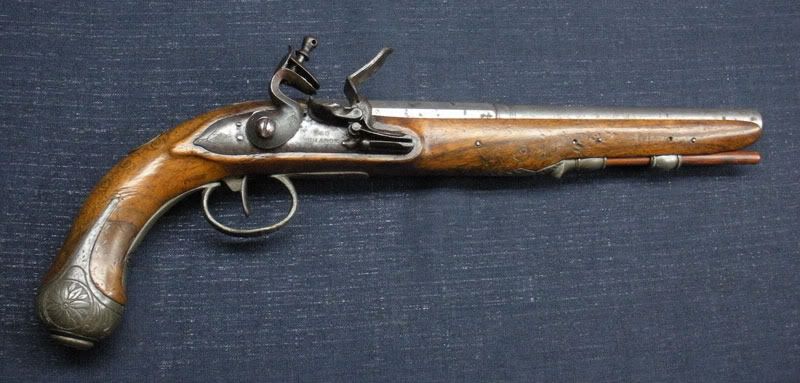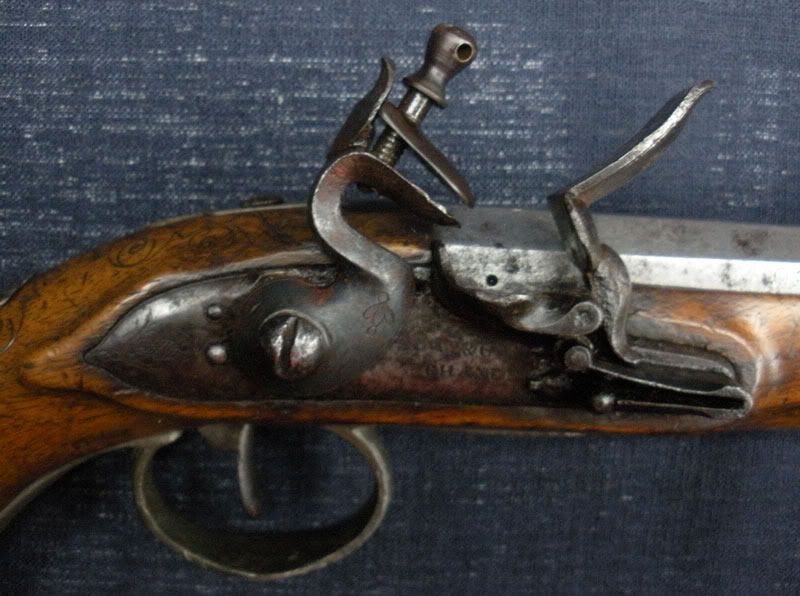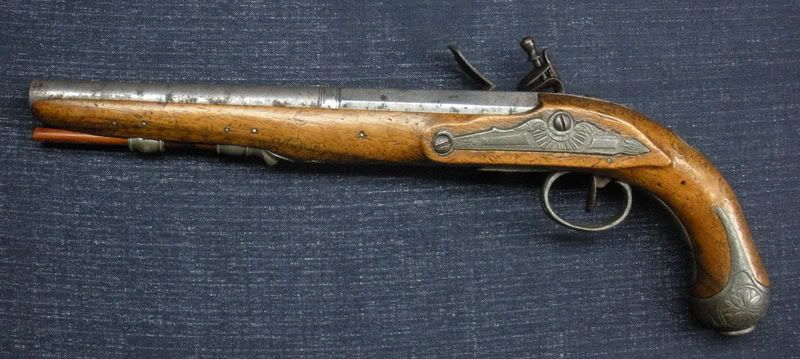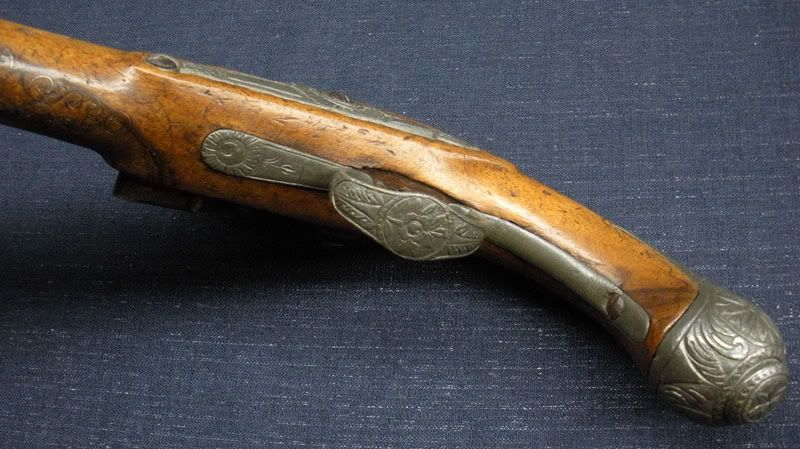
 |
|
|||||||
 |
|
|
Thread Tools | Search this Thread | Display Modes |
|
|
|
|
#1 |
|
Member
Join Date: Jul 2009
Posts: 607
|
The most interesting thing about this pistol for me are the pewter mounts, which I have never seen before. Caliber is ~16 mm. Barrel is 27 cm long, Liege-proofed, marked LONDON, and profusely-marked on the bottom and sides.
I show W. Chance and Son/Sons ca.1820s. The overall style of the decorations is to me suggestive of the Eastern, perhaps Persian vernacular. What are your opinions on this piece, and the barrel markings? Thank you.        
|
|
|

|
|
|
#2 |
|
Member
Join Date: Aug 2007
Location: CHRISTCHURCH NEW ZEALAND
Posts: 2,729
|
IMHO this pistol does not look English made to me. The quality of the engraving on the metal is not of the quality one would expect to see on an item of English manufacture, even the cheaper ones. Also the Belgian proof at least indicates that it was proved in Liege. Most English pistols were stocked in walnut, and this does not look like walnut.
IF it was imported into England then it SHOULD also bear British proof marks. Are there other marks you have not shown in the pics?---maybe under the barrel. I suspect that Chance is a retailer, rather than a maker. Regards Stuart |
|
|

|
|
|
#3 | |
|
Member
Join Date: Sep 2008
Location: PR, USA
Posts: 679
|
I must comment on the shape of the numbers, they look way too modern...
My two cents. Best M Quote:
|
|
|
|

|
|
|
#4 |
|
Member
Join Date: Jul 2009
Posts: 607
|
There are plenty of English-made pistols with more primitive decorations than are shown on this piece.
The proof of Liege, along with the absence of any British proof marks may indicate that the pistol was made for the Eastern trade. My main interest here is the mounts, cast either of lead, pewter, or a similar metal/alloy. As I wrote , I have never seen furniture like that. The floral decorations, including the roses, along with the crescent may point towards the Orient, I reckon. It is possible that the pistol was stocked in Turkey or Persia, from the European parts... The barrel and the lock are decorated en suite. |
|
|

|
|
|
#5 |
|
Member
Join Date: Jun 2008
Location: The Sharp end
Posts: 2,928
|
I have to say, its a nice looking pistol, but it is an unusual choice of material for the mounts!
The trigger guard especially. Pewter is so soft, scratches so easily and bends... well! Looking at the trigger guard and the thin metal aorund the screws, whatever this guns origins, its certainly a lucky survivor to still have a full set of these pewter mounts. Although... that aside! It can be polished to look like silver but is a lot cheaper, and it would look much more 'classy' than the more familiar bronze/brass mounts. So, I'd conclude that it had these mounts as a cheaper alternative to silver. OOh, just a thought, and you'd be brave to remove one.... They might have some kind of 'hallmark' I think, if they are English pewter. Didn't pewter made here often have 'pseudo' hallmarks? Last edited by Atlantia; 31st October 2009 at 09:39 PM. |
|
|

|
|
|
#6 |
|
Member
Join Date: Sep 2008
Location: PR, USA
Posts: 679
|
Guys,
What about my comments on the shape of the 9 and the 4? Are these usual for a putative 18th C dating? I undertand that flintlocks were used in some places up to the late 19th C, due to easier availabaility of blackpowder and flints, compared to industrial ammo. Could this be an export piece belonging to these places and later dates, or perhaps even made from earlier parts and retooled with new numbers? |
|
|

|
|
|
#7 | |
|
Member
Join Date: Jul 2009
Posts: 607
|
Quote:
Last edited by Dmitry; 1st November 2009 at 06:50 PM. |
|
|
|

|
|
|
#8 | |
|
Member
Join Date: Jul 2009
Posts: 607
|
Quote:
I definitely agree on the less expensive choice of mounting. When polished bright pewter resembles silver, which would be even softer, by the way. |
|
|
|

|
|
|
#9 | |
|
Member
Join Date: Jun 2008
Location: The Sharp end
Posts: 2,928
|
Quote:
It certainly looks like pewter in the pics, and the colour is right. As for the visible wear, it does look like its got the characteristic plethora of tiny marks that pewter often acquires over time. In general the whole gun looks like its been pretty well cared for. Its a rather nice piece! Are you tempted to take one off and see if there are makers/hall-marks on the back? |
|
|
|

|
 |
|
|